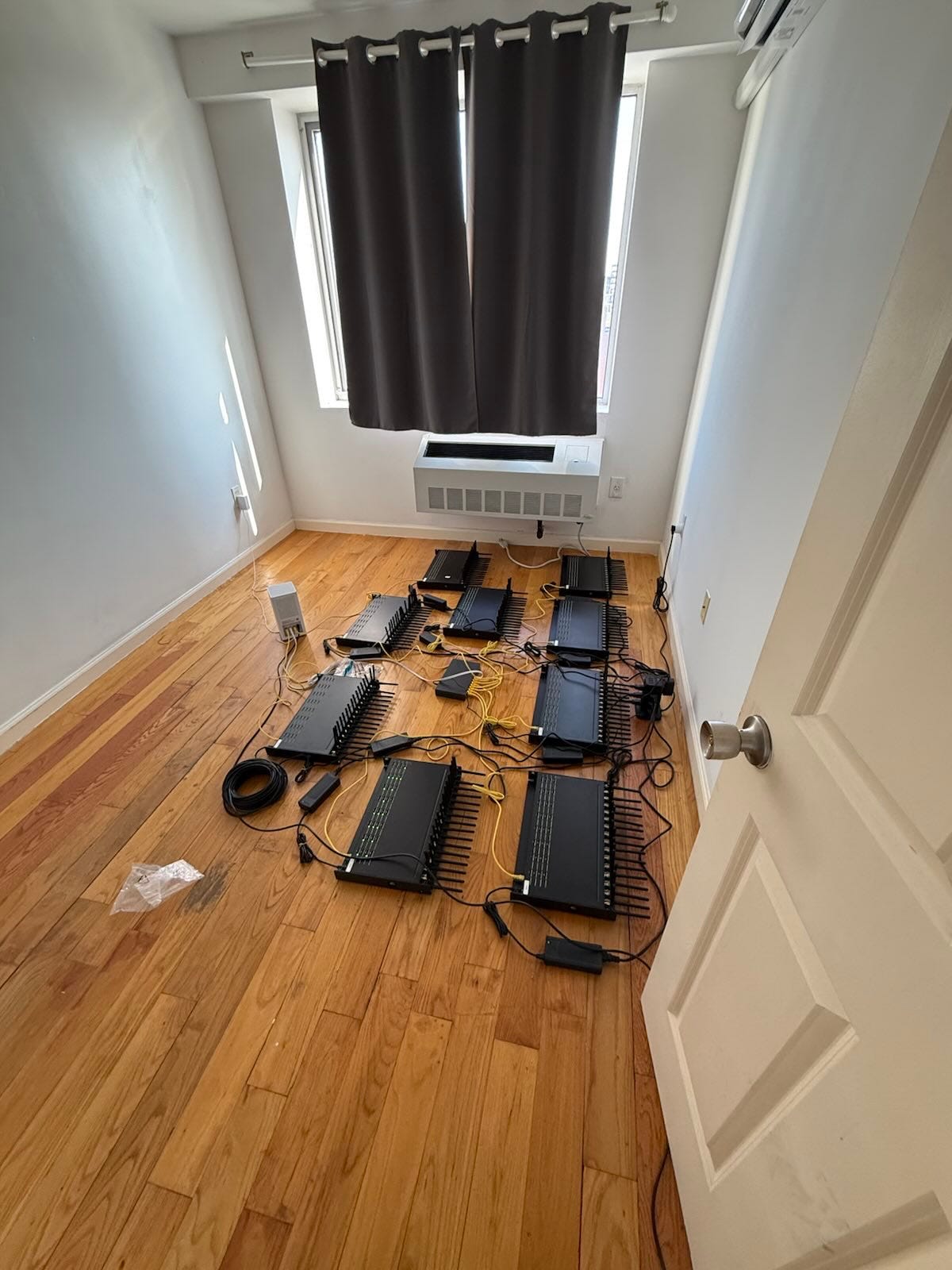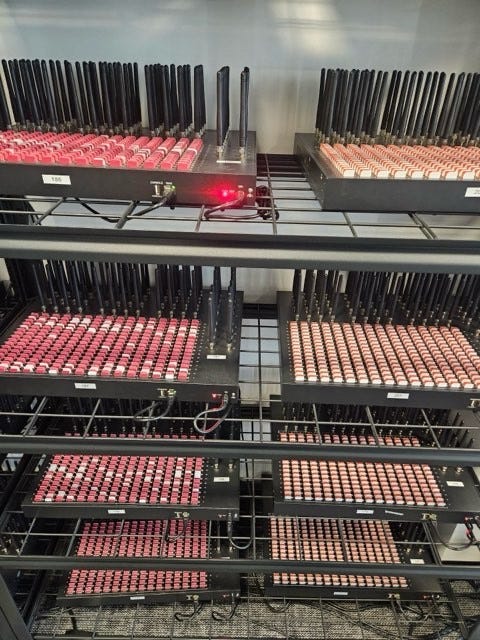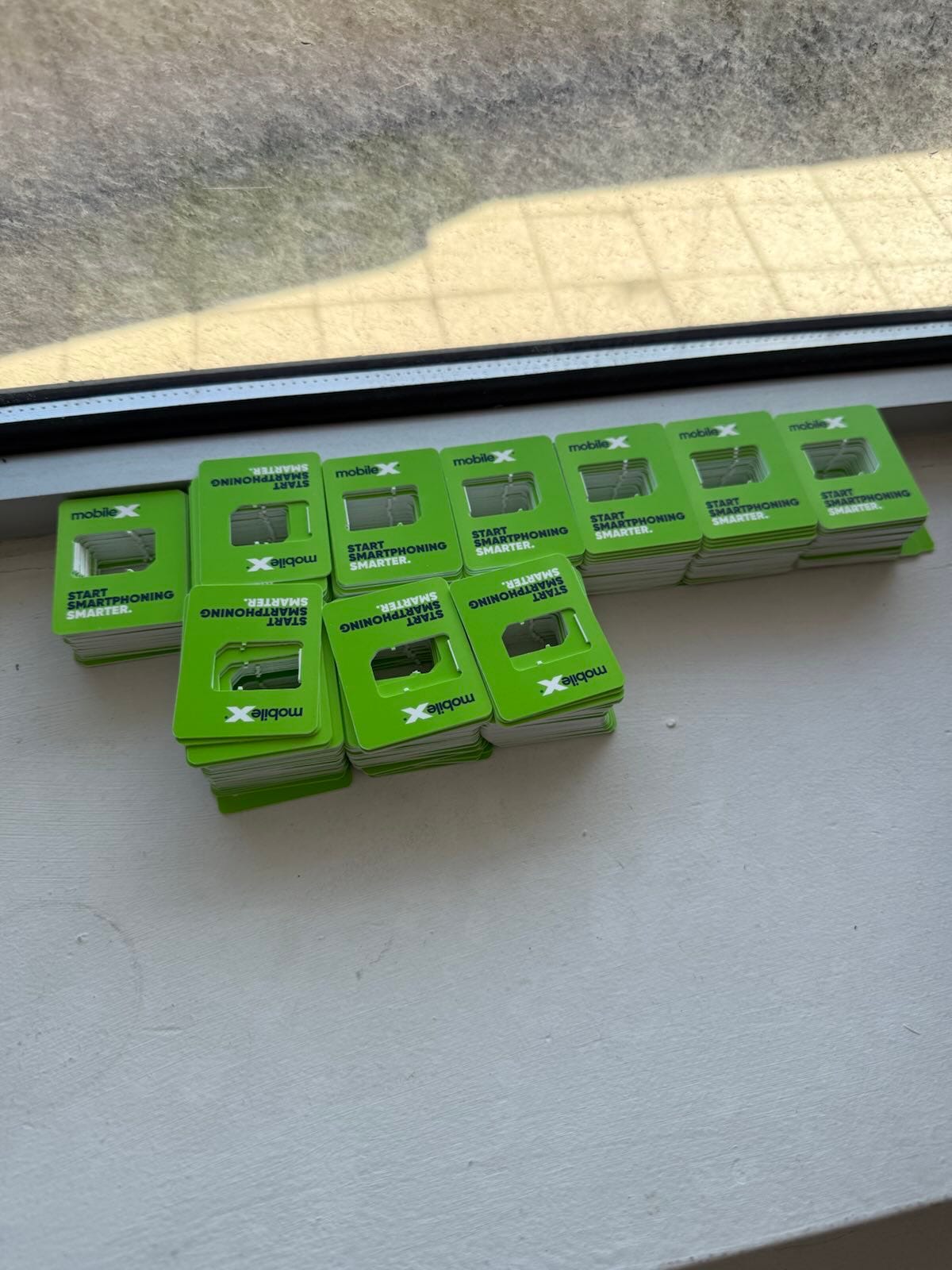SIM Safehouses Around the UN: How the Secret Service Just Dismantled a Phantom Network
300 servers. 100,000 SIM cards. Empty safehouses across New York, New Jersey, and Connecticut. This wasn’t just telecom fraud, it was a battlefield staged in plain sight.
The Operation
In the days leading up to the UN General Assembly, the Secret Service’s Advanced Threat Interdiction Unit executed a coordinated takedown :
300+ SIM servers seized
100,000 SIM cards pulled from circulation
Safehouses raided across New York, New Jersey, Connecticut
The network wasn’t tucked away in dark-web forums. It was staged inside apartments, offices, and storage units within a 35-mile radius of Manhattan. Right where heads of state were converging:
What the Network Was For
At minimum, it was already used to push anonymous threats against U.S. officials. But the architecture suggests more than harassment:
Telecom disruption. SIM farms at this scale can flood towers, overload signaling channels, or degrade service across a region.
Anonymized C2. Rotating SIM cards in hundreds of servers = perfect cover for command-and-control, blending into the noise of carrier traffic.
Spoofed identities. From SMS phishing to fake caller IDs, the infrastructure could impersonate anyone, anywhere.
This was less about “SIM fraud” and more about bending the backbone of communications.
Nation-State Shadows
The Hacker News cites investigators linking the traffic to known state operators and persons of interest to law enforcement . The Secret Service avoided naming a country, but the inference is clear: hostile intelligence services were active in the loop.
Think about it:
Renting dozens of properties across tri-state costs money.
Procuring, shipping, and syncing 300 SIM servers costs even more.
Stashing 100,000 SIMs requires logistics networks, shell companies, laundering.
This wasn’t a hobbyist farm. It was a funded project, staged near one of the highest-value diplomatic events on the planet.
The Bigger Play
Ask the harder questions:
Were these SIM safehouses meant to blind or jam networks during a UN crisis?
Were they serving as covert comms nodes for agents in-country?
Or were they a masking layer, allowing hostile actors to deliver threats and misinformation while hiding behind U.S. phone numbers?
Whatever the intent, the optics are the same: pre-positioning telecom weapons inside the host city of the UN is escalation.
Why It Matters
Telecom is soft underbelly. We secure endpoints, patch servers, scan emails, but the SIM layer remains an afterthought. This case shows it’s an exploitable battlefield.
Hybrid ops, cheap tools. A SIM farm is deniable, disposable, and globally scalable. Pair it with state sponsorship, it turns into infrastructure terrorism.
Signal to adversaries. The takedown isn’t just enforcement, it’s deterrence. The U.S. just drew a line: deploy infrastructure near critical diplomatic events, expect it to be burned.
The Last Word
300 servers, 100,000 SIMs, empty safehouses — all hidden in plain sight. The Secret Service dismantled this one, but it won’t be the last.
The blueprint is simple: weaponize telecom, cloak operations in fraud infrastructure, and wait for the right moment to flip the switch.
We’ve entered a new phase where the real threat isn’t malware in your inbox, it’s the phantom network humming quietly in a storage unit down the block.





